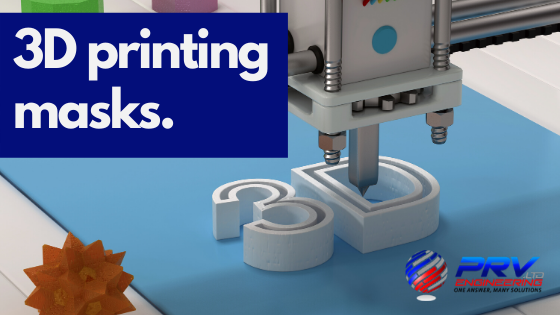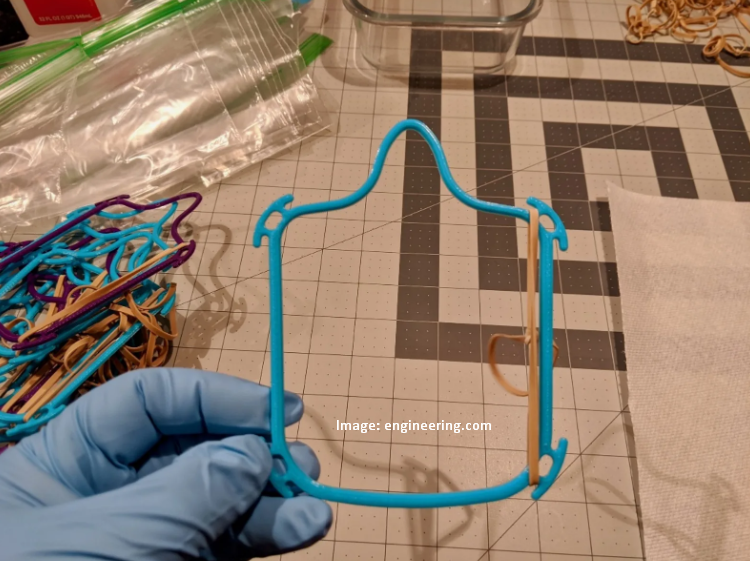
In some ways, the coronavirus has forced us to look at things differently, including creating more remote work opportunities and advanced manufacturing solutions. One of the many standouts must be 3D printing as this technology has helped us cope better, specifically with the PPE and ventilator shortage.
Finding A Solution With 3D Printing
A solution comes to the fore courtesy of a designer at GE Additive who was looking for a respirator mask in March but couldn’t find what he was looking for. At the time, it had nothing to do with Covid-19 but rather a personal woodworking project. Even in those early stages of the pandemic, he not only noticed a shortage but also how exorbitantly expensive masks were online.
Mark took a different approach and looked at popular 3D printing community websites to try and print a mask at home. However, the available designs weren’t up to scratch as they either took too long to produce or required the use of HEPA filters or other gear such as scuba masks.
Recommended: ‘How UK Business Are Fighting COVID-19’
3D Printing Respirator Masks At Home
After some deliberation, Mark decided to design his own mask which would conform to all health regulations with a much faster printing time. His design included a thin rim of malleable plastic with cleats so wearers can attach strings or rubber bands to keep the 3D printed mask in place.
The design of the face rim component is extremely versatile in that you can produce it using either 3D printing, injection moulding or laser cutting. From there, Mark posted the prototype design onto a Facebook group dedicated to developing open-source medical equipment. Their response was enthusiastic and they even suggested some minor improvements, including added flexibility and a smaller nose area.

Once completing the first design, Mark took a second design concept to the GE Additive COVID-19 Task Force. Just five days after he conceived the design, they started distributing the masks to local hospitals.
Answering The PPE Call In Style
The U.S. Navy had requested GE Additive to find more solutions to their own mask shortage. Their primary concern was to comply with the CDC’s recommendation that everyone should wear a mask as often and as long as possible when working in close quarters. Considering that active marines and naval officers operate and live on ships, this was a crucial requirement.
To answer their call, GE Additive presented Mark Fuller’s 3D printed mask design to additive manufacturing staff at the U.S. Navy’s Air Systems Command. Once the National Institute of Health (NIH) inspected and approved the design, the U.S. Navy started printing them by the tens of thousands. However, it’s important to note that it is NOT a replacement for the N95 masks.
3D Printing Masks Across The World
Marines stationed in Okinawa also got involved where they printed 800 masks per day. This also included assembling the 3D printed masks with fabric and elastic bands. A U.S. Navy base in Florida assembled the masks using cotton fabric and coffee filters.
After uploading the designs to Thingiverse and GrabCAD, there were several new developments and modifications within the 3D printing community. Fuller’s design spread around the world prompting a Pakistani volunteer corps to also adopt the design where they began production straightaway.
It didn’t stop there as an Indiana-based garden supply company started selling Fuller’s mask frames for $8.54 online. Taking it another step further, researchers at the University of Delaware Design Studio modified the design and posted it to online 3D printing communities for reactions and feedback.
Final Thoughts
While the pandemic continues to wreak havoc on the world’s economy, it has revealed many weaknesses in global healthcare, readiness and response times. Although some countries have started to go “back to normal”, we’re a long way from having a fully active population. Let’s hope that through the use of technology, innovation and partnerships, we can learn from our mistakes and overcome this challenge together.
As technology continues to improve, it’s only a matter of time before we see even bigger and better solutions to everyday problems. Mark Fuller’s story is just one of many as people in the industry are excited to see where 3D printing is heading.
For more interesting articles, please follow and share our blog as we cover all things engineering, manufacturing and technology. You can also join the conversation on Twitter, Facebook, YouTube or LinkedIn using the hashtag, #PRVtech
This site uses Akismet to reduce spam. Learn how your comment data is processed.


 Mail:
Mail: 




Leave a Comments